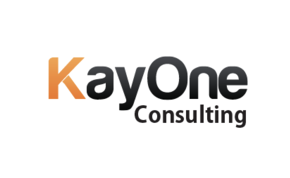Investor Due Diligence: Everything That A Founder Should Know
If you are an entrepreneur looking to raise capital, then getting the investor due diligence process right is critical. Understanding what investors look for in a due diligence process helps you navigate the challenges that the due diligence might throw up. Investments in start-ups are inherently risky. The pre-investor due diligence helps investors identify risks, pitfalls and potential red flags in a transaction. As per research, only 10% to 15% of the investment proposals pass through the screening phase. Further, those deals that clear the initial screening phase are evaluated through a detailed due diligence process.
What is Due Diligence?
The meaning of the term “due diligence” originated in the 1930s when it was used in the context of investments. Fast forward a decade, the term “investor due diligence” has evolved into a more precise definition referring to the process of checks conducted by an investor. The term transformed over the period to refer to the investigation process itself, and was adopted in the content of private equity and start-up investments.
Investor due diligence, encompasses a wide range of scenarios, including startups, private equity, venture capital, and other types of finance. The nature and scope of the due diligence depend on the nature, type and quantum of the investment.
Case of Due Diligence Gone Wrong
The (Not So) Honest Company In 2011, Actress Jessica Alba founded The Honest Company that aimed at offering consumers healthy alternatives to heavily processed household goods such as cleansers and toiletries. The Company had raised about $490 million from investors like AllianceBernstein, Lightspeed Venture Partners, Glade Brook Capital Partners. However, in 2017 there were claims that The Honest Company was engaged in fraudulent labeling of some of its products. Even though the Company denied allegations, a law suit followed, and the Company ended up paying $7.3 million to settle the class-action suit. It also resulted in a valuation drop by about 50% from 20151
Law suits like the one in Honest Company are a serious reminder of the importance of due diligence. Despite being an extreme case, it is still a stark reminder of not exercising proper due diligence. Investments in start-ups are risky, but the complexity of the deal should not be a reason for skipping the due diligence process.
Typically, the Investor Due Diligence process is quite rigorous.
This is because an investor intends to understand the underlying challenges in a business proposal. Furthermore, such information helps him in determining a deal’s suitability before moving into the next phase of the process.
Though each investor has his own way of executing the due diligence process. But, the due diligence process itself involves certain general practices in screening and evaluating potential investment proposals. In this article, we will discuss the key factors that investors look for when evaluating business proposals during due diligence.
But before we discuss the factors, let’s understand what are the different types of due diligence that an investor conducts.
[monsterinsights_popular_posts_inline]
Types of Investor Due Diligence
As we discussed before, there is no standard ‘template’ for an Investor due diligence exercise. Specific circumstances of the investment usually decide the scope of the due diligence. These include:
- Type of investment (equity, preferred, loan)
- Quantum of investment
- Structure of the start-up (parent, subsidiary, group etc.)
- Constitution of the start-up (partnership, company)
- Experience and bandwidth of the investor (unexperienced or individual investors tend to have lesser scope)
- Technical issues involved such as intellectual property, multiple jurisdictions, tax complications
- Stage of the funding cycle (Seed, Series A/B/C)
Notwithstanding the differences in scope due to different investing scenarios, a typical due diligence will include commercial, legal, financial and tax due diligence.
Commercial Due Diligence
This type of Due Diligence involves studying the macroenvironment of the industry to which a company’s stock belongs.
The goal of monitoring the macroenvironment is to understand the important variables or events are that can influence the strategic orientation of the company.
Accordingly, an investor monitors the following factors under the commercial due diligence of a company:
- Market and customer attractiveness
- Industry structure and dynamics
- The competitive position of the company
- Risks and opportunities
Operational Due Diligence
Operational Due Diligence involves analyzing the past and present operational performance of a company.
Such an analysis helps the investor in identifying the operating potential, bottlenecks, and the potential capital expenditure requirements of a company.
Accordingly, an investor assess:
- Cost structures and drivers
- Production performance
- Operations & maintenance
- Technical and intellectual capital
- Property & engineering liabilities
- Operational improvement required
Financial Due Diligence
Financial due diligence is the process of determining whether an investment proposal creates value for the investor. In other words, it is the process of determining the possible risks and returns of an investment proposal.
It involves determining the intrinsic value of the target company. Further, it also involves evaluating its current financial situation, past profitability, and cash flows.
Accordingly, an investor evaluates the following financial aspects of an investment proposal:
- Actual earnings
- Valuation
- Working capital
- Cash flows
- Financial projections
- Contingent liabilities
[monsterinsights_popular_posts_inline]
Legal Due Diligence
This type of Due Diligence involves reviewing company documentation. The fundamental objective to perform due diligence of this type is to identify any potential legal risks of an investment proposal.
It is conducted to ensure execution of corporate compliance, knowledge of special provisions impeding the potential investment, and the legal powers of the company.
Accordingly, an investor reviews the following legal aspects of an investment proposal:
- Corporate compliance
- Rights and obligations under material contracts
- Tax implications
- Existence or avoidance of material breaches
- Disclosure or confidentiality restrictions
- Disputes with unions or employees
- Compliance with obligations
Organization or Business Due Diligence
Organization Due Diligence involves analyzing the formal structure of an organization and issues associated with it. Such an analysis involves examining the various levels of administrative structure and span-of-control within the organization.
Further, it also involves assessing the level of delegation of authority and responsibility within the organization and decision-making process.
Thus, an investor assesses the following aspects of an organization when conducting due diligence:
- Management and team capabilities
- Team commitment
- Organizational structure and efficiency
- Top-level members of the organization
- Organizational culture
[monsterinsights_popular_posts_inline]
Key Factors To Look For In Investor Due Diligence
1. Company Size and Structure
The first and foremost aspect that investors look for in an investment deal is the legal and financial structure of the company. In other words, the investor wants to know about the type of company structure, the key decision-makers, and the owners of the company. Most venture capitalists have specific investment criteria – for example, some of them may not invest in a pre-revenue start-up; Some investors would want you to reach a certain revenue/size before they consider an investment.
They want to gain insights regarding the purpose or the events that led to the formation of the company’s current legal structure. Further, the investor wants to have an understanding of the different classes of securities they intend to invest in. This is because each security class has its own rights and obligations.
Also, the investor may ask questions regarding the ownership or control of the company. Such questions may help them to know about certain shareholders’ rights and obligations. These may include voting rights, any transfer restrictions, specific rights like the right of first offer or refusal, etc.
2. Revenue and Gross Margins
The next factor that investors look for in the due diligence process is the current revenues and gross margins of a business. They may review the actual amount and proportion of sales revenues and operating profits for each product line within a business.
The idea behind examining company revenue is to determine average realizations by product, service, or contract. Such a review may help the investor to know about a company’s credit terms for major customers, nature of billing cycle, increase in the size of operations for existing customers.
Further, it may also help them in determining whether the underlying products or services have the potential. The more detailed the information, the more valuable it is for the investors. Remember, detailed accounting may help the investor in uncovering the actual profitability of product lines or product line segments. In the case of a broad financial report, such profitability remains concealed.
All such insights help investors to have an understanding of the business failures, successes, and changes in direction. But it also indicates any potential risks of revenue loss.
3. Market Size and Competition
The investor Due Diligence process may also define in detail the markets, competition, and customers of a business.
Here, the term “market” for a specific business can be defined either by geography, pricing, service, or other factors. The “Competitors” refers to the current as well as the future competition of a business. Likewise, the term “customers” may refer to one-time, not repeat, or regular buyers. The investor may decide whether to include potential customers in the market.
The investors review detailed information about both competitors and customers. Besides identifying the current customers and competitors, the investors also identify the potential customers and competitors. This helps them in accurately determining the total market of a business.
The other important factor is the market size – How big is this opportunity? Is it worth investing? Can the business scale quickly?
This is because each industry has its own set of risks, barriers, and regulations. And it is important for an investor to have an understanding of all these aspects before investing in a prospective deal.
[monsterinsights_popular_posts_inline]
4. Management and Ownership
The most important factor that investors look out for during corporate due diligence is the quality of company management. This is because it is the managerial team of a business that operates the day-to-day operations at present and will manage the same in the future.
The Management Due Diligence process involves identifying executives and professionals holding positions of substantial responsibility. Furthermore, it also includes determining the competence and potential of such individuals besides evaluating their total compensation and associated expenses.
The identification of key management members is the key task of investors. Investors need to understand the authoritarian structure of a business. This is because it is the authoritarian structure of a business where individuals in power make all the key decisions.
Also, the management’s due diligence may help the investors to uncover any instances of actual or suspected fraud involving a senior employee or an executive holding an important position in the company’s management.
Therefore, one of the crucial tasks of investors is to check the background of promoters and the performance of the senior management team. They need to ensure that the senior management has made disclosures to the board. Such disclosures may relate to all material financial and commercial transactions, where they may have a potential conflict with the interest of the company at large.
5. Valuation Multiples
Investment Due Diligence is an important practice in determining a fair valuation of an investment proposal. Determining the valuation of a business is another important factor that an investor must undertake.
Business valuation is an estimate of the worth of a business and its assets. Estimating a realistic business valuation figure involves analyzing the business operations over the past several years.
Furthermore, it also involves forecasting the future potential of an industry, economy, and the company in question.
The evaluation of the past and future potential of operations of a business involves determining the past and the future cash flows of a business. Apart from this, it also involves determining a host of intangibles that are quite difficult to measure.
There is a wide variety of methods to determine business valuation. Thus, depending on the valuation method used by a business to evaluate its intrinsic value, an investor may look for different valuation variables.
Note that the most important aspect for an investor concerning business valuation is the reasoning behind the pricing. This is because it helps him to identify the value and the risks associated with capital investment in a business.
Thus, the most common methods of valuation that a business uses to defend its stock pricing include:
- Balance Sheet Based Methods (For Late Stage Businesses or Asset-Heavy Businesses)
The balance sheet-based methods assess the value of a business depending on the value of its assets. The first balance sheet method an investor may use to evaluate business valuation is the Book Value Method.
A company’s book value is nothing but the difference between its assets and liabilities.
Accordingly, Book Value = Assets – Liabilities or Equity + Reserves
These methods do not take into consideration the expected financial performance of the combined company. Further, they do not take into account other factors like the organizational structure, employees’ performance, current market situation, etc. Although, these may influence the valuation of a business.
Another balance sheet-based method of valuation that an investor may use is the Adjusted Book Value Method. This method considers business valuation based on the net assets of a business after considering the off-balance sheet liabilities as well.
[monsterinsights_popular_posts_inline]
- Income Statement Based Methods
Income Statement Based Methods of business valuation enable an investor to evaluate business valuation based on a company’s income statement. Accordingly, an investor may either determine the value of earnings, the value of dividends, EBIT, or EBITA.
The value of earnings method enables an investor to calculate a company’s equity value by multiplying its Annual Net Income with its Price Earning Ratio (PE Ratio).
PE Ratio is the ratio that compares a company’s market price per share and earnings per share. In other words, this ratio indicates the price market is willing to pay per share based on the current earnings.
Thus, an investor may determine the value of equity in the following manner:
Price Earning Ratio (PER) = Market Price Per Share/Earnings Per Share
Equity Value = PER x Earnings
Likewise, an investor may also determine the value of a business by evaluating the value of dividends.
Dividends are the payments made out of the company’s profits to its shareholders. This method evaluates the value of a company’s equity by dividing its distributed dividend per share (DPS) by the required return on equity (Ke).
- Discounted Cash Flow Model
This method determines the value of a business by forecasting its future cash flows and then discounting them using a risk-appropriate discount rate.
The investor may determine the value attached to the investment using this model. Thus, he may look for some value drivers related to his future cash flow
estimations.
The key value drivers may include:
- Sales growth in volume revenue terms
- Operating profit margin
- New fixed capital investment
- New working capital investment
- Competitive Advantage Period (CAP) and
- Cost of Capital
6. Financial Statements
The major part of due diligence is to understand the financial statements of a business. The investor may repeatedly question the reliability of a company’s financial statements during the due diligence process.
Accordingly, they may review a company’s monthly or interim reports, annual reports, and tax return reports. The review of the financial statements helps an investor in understanding the accounting policies and practices that a business follows. Such policies have a great impact on the profits or losses recorded in the company’s financial statements.
For instance, a change in an accounting policy may showcase profits instead of previously recorded losses. Thus turnaround in figures is a result of changes in accounting policy and not efficient management of the business.
Thus, in an investment due diligence process, an investor reviews the financial statements to understand the accounting approach and policies of a business. Besides, they also try to determine if there is any specific pattern of accounting practices that a business has used to achieve a specific objective.
[monsterinsights_popular_posts_inline]
For instance, if the management follows a practice of either inflating or deflating income, then there are high chances that a pattern of similar practices exists.
In addition to this, the investor also performs certain tests to ensure that the actual practices are consistent with the accounting policies. This is despite the fact that the management has accurately written and explained such policies.
Thus, an investor may lookout for the following accounts in the financial statements of a business:
- Cash position, short-term investments, receivables, and current liabilities
- Trade receivables to know the proportion of revenues
- Inventory to understand whether it’s over or undervalued
- Tangible and intangible assets
- Liabilities including the unrecorded liabilities
7. Risks and Threats
An investor needs to access the potential risks involved in an investment proposal. To achieve this, he may enquire about all the relevant aspects of the past, present, and future of a business. Such an assessment will help an investor to make informed decisions and can eliminate a number of risks.
He also seeks to know whether an effective risk management program is in place. This is because such a program helps a business to protect its bottom line and maintain a competitive advantage.
[monsterinsights_popular_posts_inline]
8. Future Expectations
An investor may determine the revenue and profit estimates for the next few years in order to understand the future potential of a business.
Further, he may also look for any industry trends that may influence business in the future. Also, he may seek to determine any company-specific updates on the upcoming products and services, partnerships, intellectual property, etc.
Such updates may further help the investor in analyzing the underlying investment proposal further.
Conclusion
An investor may perform due diligence in a comprehensive way to understand the associated risks and returns of an investment proposal.
Such an analysis helps the investor to ensure that the business is what it appears to be. It also helps him to identify any potential defects in the underlying investment proposal so that he avoids a bad investment.
Further, due diligence will help him in gaining information useful for valuing assets and negotiating to price.




